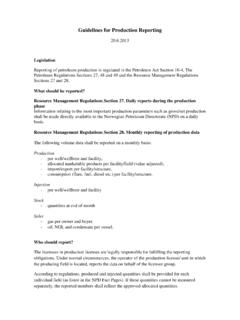Transcription of Positive Psychology Progress Empirical Validation of ...
1 Positiv psykologi Martin E. P. Seligman and Tracy A. Steen, University of Pennsylvania Nansook Park, University of Rhode Island Christopher Peterson, University of Michigan Positive Psychology Progress Empirical Validation of Interventions The value of the overarching term Positive Psychology lies in its uniting of what had been scattered and disparate lines of theory and research about what makes life most worth living. Can psychologists create an evidence-based practice of Positive Psychology ? Five years have passed since the Ameri- how, why, and under what conditions other lines of work are moving into the can Psychologist devoted its millennial Positive emotions, Positive character, realm of application (Linley & Joseph, issue to the emerging science of Positive and the institutions that enable them 2004).
2 Can psychologists take what they Psychology : the study of Positive emo- flourish ( , Cameron, Dutton, & have learned about the science and prac- tion, Positive character, and Positive Quinn, 2003; Easterbrook, 2003; Gard- tice of treating mental illness and use it institutions (Seligman & Csikszentmi- ner, Csikszentmihalyi, & Damon, 2001; to create a practice of making people halyi, 2000). Drawing on methods effec- Kahneman, Diener, & Schwarz, 1999; lastingly happier? That is, can they cre- tively used to advance the science of Murray, 2003; Vaillant, 2000). ate an evidence-based practice of posi- mental disorders, Positive psychologists Positive psychologists do not claim tive Psychology ? have been studying mental health and to have invented the good life or to have In this article, we first review the well-being.
3 Building on pioneering work ushered in its scientific study, but the recent growth within Positive psychol- by Rogers (1951), Maslow (1954, 1962), value of the overarching term Positive ogy. Next, we describe basic research Jahoda (1958), Erikson (1963, 1982), Psychology lies in its uniting of what had that bears on whether people can Vaillant (1977), Deci and Ryan (1985), been scattered and disparate lines of become lastingly happier, and then we and Ryff and Singer (1996) among theory and research about what makes present the results of our own happiness many others Positive psychologists life most worth living (Peterson & Park, interventions that we rigorously tested have enhanced our understanding of 2003). As the basic science continues, with a randomized, placebocontrolled design.
4 This article originally appeared as Seligman, M. E. P., Steen, T. A., Park, N., & Peterson C. (2005). Positive Psychology in Progress . Empirical Validation of interventions. American Psychologist, 60, 410 421. Copyright Progress Report 2005 by the American Psychological Association. Reprinted with permission. No further reproduction or Positive Psychology is an umbrella term copying is permitted without the express written permission of the American Psychological Association. for the study of Positive emotions, posi- Martin E. P. Seligman was president of APA in 1998. This article is based in part on his presidential address, tive character traits, and enabling insti- delivered in Boston at APA's 107th Annual Convention on August 21, 1999. This article updates the Progress of research on Positive Psychology in a follow-up to the January 2000 special issue of the American Psychologist.
5 Tutions. Research findings from Positive This research was supported by the Annenberg/Sunnylands Trust Foundation, by Atlantic Philanthropies, Psychology are intended to supplement, by the John Marks Templeton Foundation, and by National Institute of Mental Health Grant MH63430. not remotely to replace, what is known Correspondence concerning this article should be addressed to Martin E. P. Seligman, Positive Psychology Center, University of Pennsylvania, 3701 Market Street, Philadelphia, PA 19104 or to Christopher Peterson, about human suffering, weakness, and Department of Psychology , University of Michigan, 525 East University, Ann Arbor, MI 48109-1109. E-mail disorder. The intent is to have a more or complete and balanced scientific under- 874 tidsskrift for norsk psykologforening 2005 42 874 884.
6 Positive Psychology Progress ABSTRACT. standing of the human experience the (questionnaires, surveys, interviews, Positive Psychology has flourished in the peaks, the valleys, and everything in and informant reports; Peterson, Park, last 5 years. The authors review recent between. We believe that a complete sci- & Seligman, 2005a). developments in the field, including ence and a complete practice of psychol- The general scheme of the CSV relies books, meetings, courses, and confer- ogy should include an understanding of on six overarching virtues that almost ences. They also discuss the newly cre- suffering and happiness, as well as their every culture across the world endorses: ated classification of character strengths and virtues, a Positive complement to interaction, and validated interventions wisdom, courage, humanity, justice, the various editions of the Diagnostic that both relieve suffering and increase temperance, and transcendence (Dahls- and Statistical Manual of Mental Disor- happiness two separable endeavors.)
7 Gaard, Peterson, & Seligman, in press). ders (e. g., American Psychiatric Associa- Under each virtue, we identified par- tion, 1994), and present some cross-cul- Books ticular strengths that met the following tural findings that suggest a surprising ubiquity of strengths and virtues. Finally, In the last five years, aside from a spe- criteria: the authors focus on psychological inter- cial issue and a special section of the ubiquity is widely recognized across ventions that increase individual happi- American Psychologist (January 2000 cultures ness. In a 6-group, random-assignment, and January 2001, respectively), literally fulfilling contributes to individual placebocontrolled Internet study, the hundreds of articles have appeared in the fulfillment, satisfaction, and happi- authors tested 5 purported happiness interventions and 1 plausible control scholarly and popular press on the topics ness broadly construed exercise.
8 They found that 3 of the inter- of Positive Psychology . Books have begun morally valued is valued in its own ventions lastingly increased happiness to appear, for example, The Handbook of right and not as a means to an end and decreased depressive symptoms. Positive Psychology (Snyder & Lopez, does not diminish others elevates Positive interventions can supplement 2002), Authentic Happiness (Seligman, others who witness it, producing traditional interventions that relieve suf- fering and may someday be the practical 2002), A Psychology of Human Strengths admiration, not jealousy legacy of Positive Psychology . (Aspinwall & Staudinger, 2003), Flour- nonfelicitous opposite has obvious ishing (Keyes & Haidt, 2003), Positive antonyms that are negative Key words: Positive Psychology ; Happiness.
9 Character strengths; Interventions. Psychological Assessment: A Handbook traitlike is an individual difference of Models and Measures (Lopez & Sny- with demonstrable generality and sta- der, 2004), Positive Psychology in Practice bility disabling conditions, gender differences, (Linley & Joseph, 2004), and Handbook measurable has been successfully and interventions that build the strength. of Methods in Positive Psychology (Ong measured by researchers as an indi- We intend this volume to be a frame- & van Dulmen, in press). These volumes vidual difference work for conducting future research and summarize the Empirical findings and distinctiveness is not redundant creating new interventions. the methods used in the science. (conceptually or empirically) with Three surprising Empirical findings We want to highlight our own Char- other character strengths have already emerged, First, we have acter Strengths and Virtues: A Hand- paragons is strikingly embodied in discovered a remarkable similarity in book and Classification (CSV; Peterson some individuals the relative endorsement of the 24 char- & Seligman, 2004).
10 The CSV represents prodigies is precociously shown by acter strengths by adults around the the most ambitious project self-con- some children or youths world and within the United States sciously undertaken from the perspec- selective absence is missing alto- (Park, Peterson, & Seligman, 2005a). The tive of Positive Psychology , and we gether in some individuals most commonly endorsed ( most like intend it to do for psychological well- institutions is the deliberate target me ) strengths, in 40 different countries, being what the Diagnostic and Statisti- of societal practices and rituals that from Azerbaijan to Venezuela, are kind- cal Manual of Mental Disorders (DSM) try to cultivate it ness, fairness, authenticity, gratitude, of the American Psychiatric Association and open-mindedness, and the lesser (1994) does for the psychological disor- Table 1 lays out the classification, which strengths consistently include prudence, ders that disable human beings.







